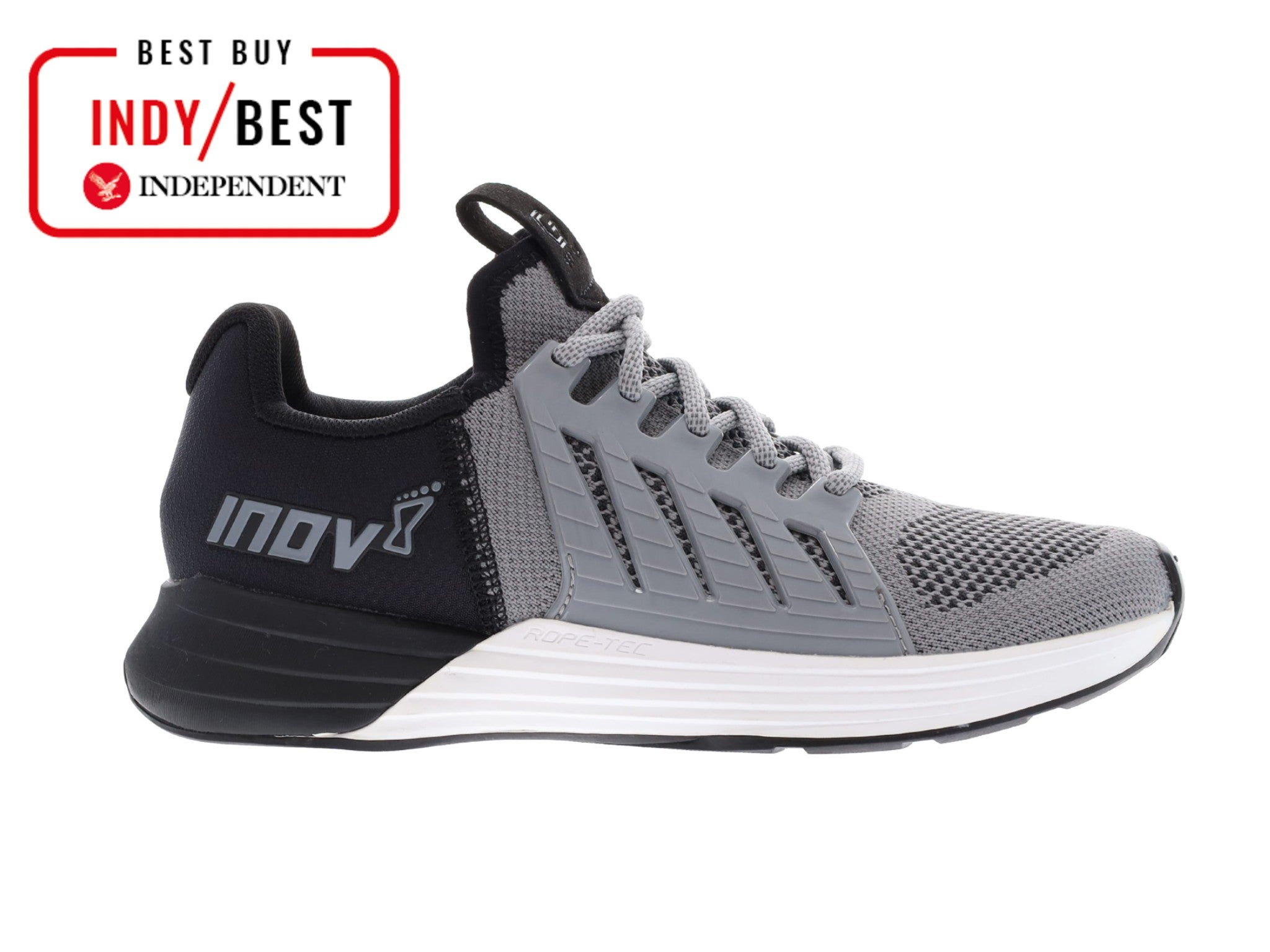
The Independent's journalism is supported by our readers. When you purchase through links on our site, we may earn commission. Why trust us?
8 best gym trainers for women that enhance performance and prevent injury
From cardio work to weightlifting, you’ll need a purpose-built pair of kicks to keep you on your toes
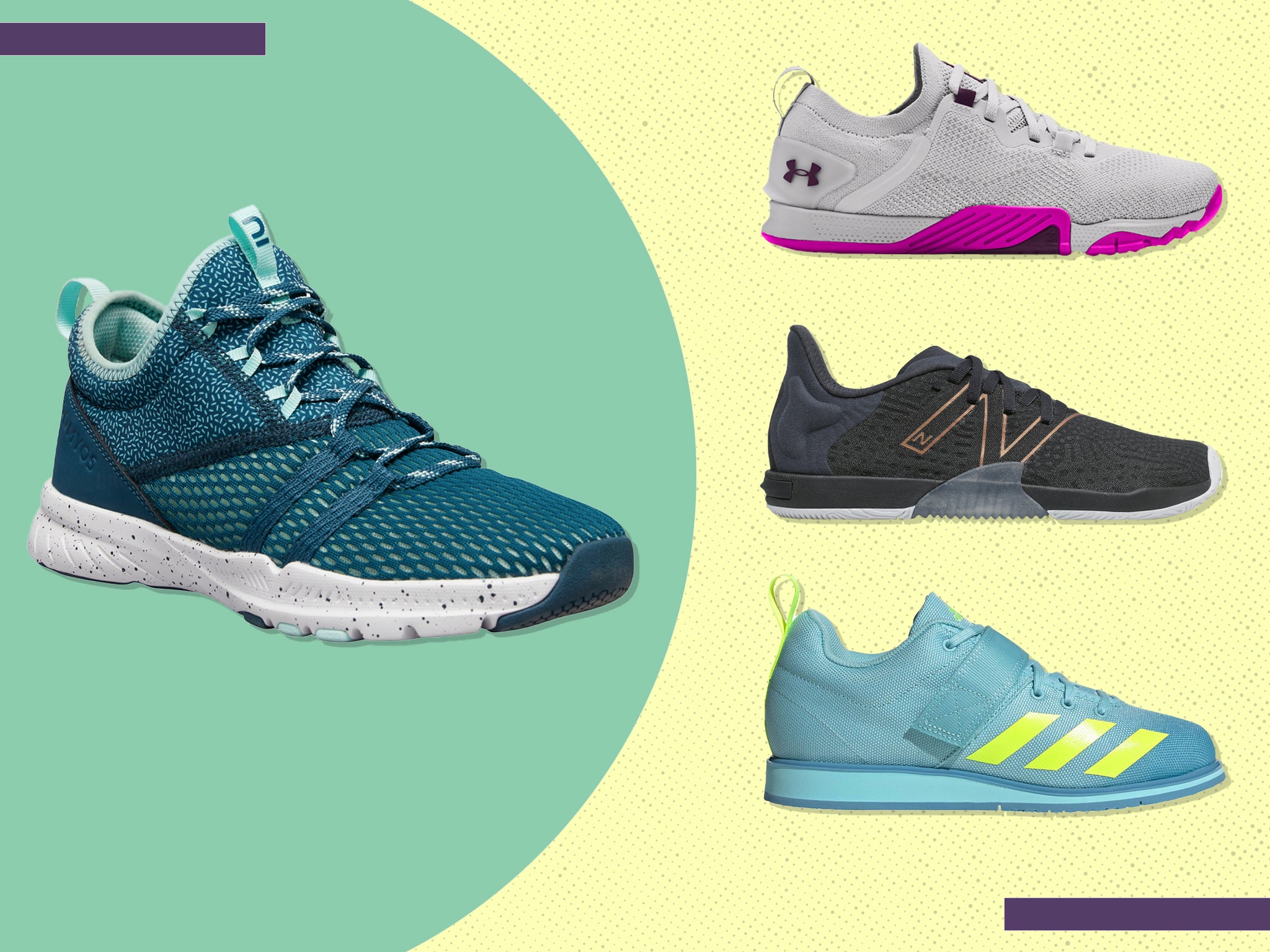
If you do a mixed workout at the gym (weights, plyometrics, short bursts of cardio), HIIT classes or functional fitness classes such as CrossFit, you should wear shoes that are designed for that purpose, rather than running shoes. Known as training shoes or cross-training shoes, they help you to perform better and prevent injury.
They’re designed for multi-directional movement, rather than the forward motion of running. Compared with running shoes, they generally have a denser, firmer midsole rather than the thick, bouncy cushioning of a running shoe.
They also tend to have a lower heel-to-toe drop, to keep them stable and reduce the chance of you rolling your ankle, and a flat, grippy outsole, which provides stability and traction for multi-directional exercises and for when you’re lifting weights. The reduction in cushioning and denser midsole means a better transfer of force into the ground when you lift heavy weights.
They’ll also have a more structured upper and reinforced heel support to help minimise lateral movement of the feet, with added durability for high-abrasion activities such as rope climbing and weights.
They tend to be wider in the forefoot than your average running shoe, allowing the toes to splay properly, but you want them to fit fairly snugly to minimise the movement of the feet – your toes should not be pushing into the ends of the shoe, but don’t leave a generous thumb’s width of space as you would in running shoes. We tested these shoes with the activities they’re designed for, such as HIIT and functional fitness, or weights alone for the weightlifting shoes.
Read more:
You can trust our independent reviews. We may earn commission from some of the retailers, but we never allow this to influence selections, which are formed from real-world testing and expert advice. This revenue helps to fund journalism across The Independent.
The best gym trainers for women in 2021 are:
- Best for durability – Inov-8 F-Lite G 300: £145, Inov-8.com
- Best for versatility – Reebok nano X1 women’s training shoes: £59.99, Sportsshoes.com
- Best for barefoot fans – Sundried women's barefoot shoes 2.0: £30, Sundried.com
- Best for weightlifting – Adidas powerlift 4 women’s weightlifting shoes SS21: £53.95, Sportsshoes.com
- Best for comfort – Under Armour women's tribase reign 3 training shoes: £62.97, Underarmour.co.uk
- Best budget option – Domyos women's fitness shoes: £19.99, Decathlon.co.uk
- Best lightweight shoe – New Balance minimus TR: £95, Newbalance.co.uk
- Best for sustainability – Puma x first mile LVL-UP women’s training shoe: £85, Puma.com
Inov-8 F-Lite G 300

Best: For durability
A light, good-looking and nimble shoe that’s designed to be a jack of all trades including jumping, weightlifting, rope climbing, cardio and multi-directional movement. Billed as “the world’s toughest training shoe” – because the outsole and midsole are infused with ultra-durable graphene – the outsole has supreme traction for fast, precise movement in all directions, and the midsole is dense enough for good power transfer when lifting weights, but responsive enough to feel fine for short runs. The “rope-tec” – a ridged band of protection to increase its durability for rope climbing – wraps around the side of the shoe.
The heel support is excellent and the shoe has a wide base that comes into its own when lifting. The upper is durable and structured but flexible enough to allow a good range of motion for the toes. bootie construction sits tight to the foot, aided by the polyurethane cage that is pulled in by the laces to secure the midfoot. It comes up slightly small – half a size up from your street shoe size should do it. Inov-8 also offers a 30-day trial period with a full refund if you’re unhappy with them.
Reebok nano X1 women’s training shoes

Best: For versatility
A popular and lightweight all-rounder that will serve you well across multiple uses, these shoes are agile but the breathable, durable upper has just the right balance of structure and support while being flexible enough for multi-directional movements. The midsole foam in the forefoot makes it responsive for plyometrics and made short bouts of running comfortable rather than clunky (a problem with some training shoes). The combination of a wide, flat outsole with outstanding traction, a supportive heel counter and midsole density that provides good power transfer worked well for lifting, although the foam does slightly take the edge off stability for heavy lifting. The tiniest gripe would be that we’d prefer a bootie construction or cage for a close fit around the midfoot, whereas this relies on pulling the laces tight. These will suit people with wide, deep feet, and they’re true to size.
Adidas powerlift 4 women’s weightlifting shoes SS21
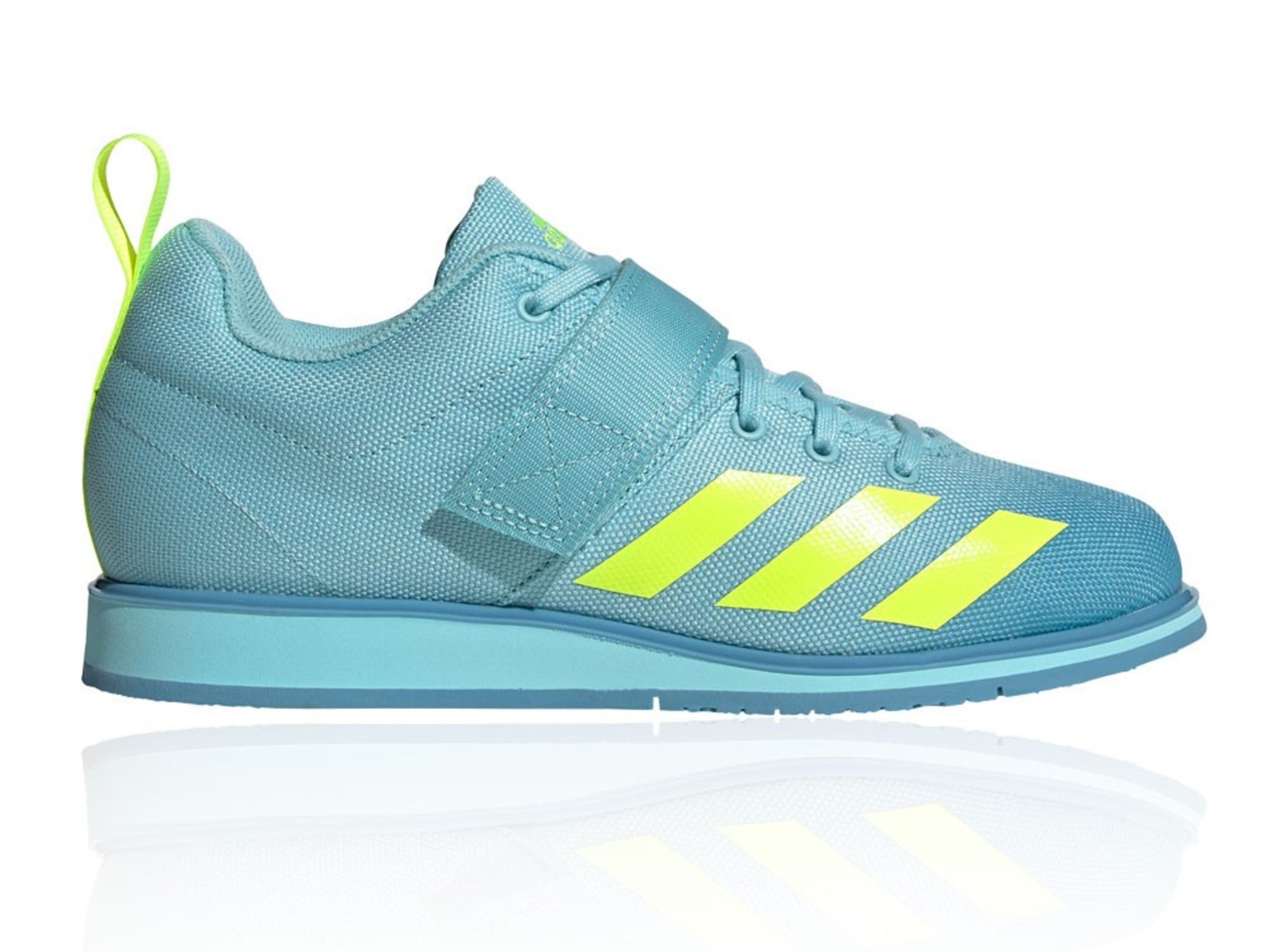
Best: For weightlifting
If all you do is lift, then a pair of weightlifting shoes is a wise investment and this shoe performs well. A high-density midsole enables superb power transfer when doing an explosive move (unlike running shoes, which are designed to absorb force) but it has enough flexibility to allow the foot to flex when needed. The flat outsole keeps the foot and ankle stable in a squat, aided by the angle from the slightly elevated 15mm heel, and the rubber provides excellent traction.
A velcro strap comes over the laces for an extra-firm lockdown of the midfoot. It’s extremely durable due to its canvas upper, and there’s firm support in the heel. It’s billed as having a narrow fit, which is true, but not restrictively so – even our relatively wide-footed tester’s toes could still splay when lifting heavier weights.
Under Armour women’s tribase reign 3 training shoes
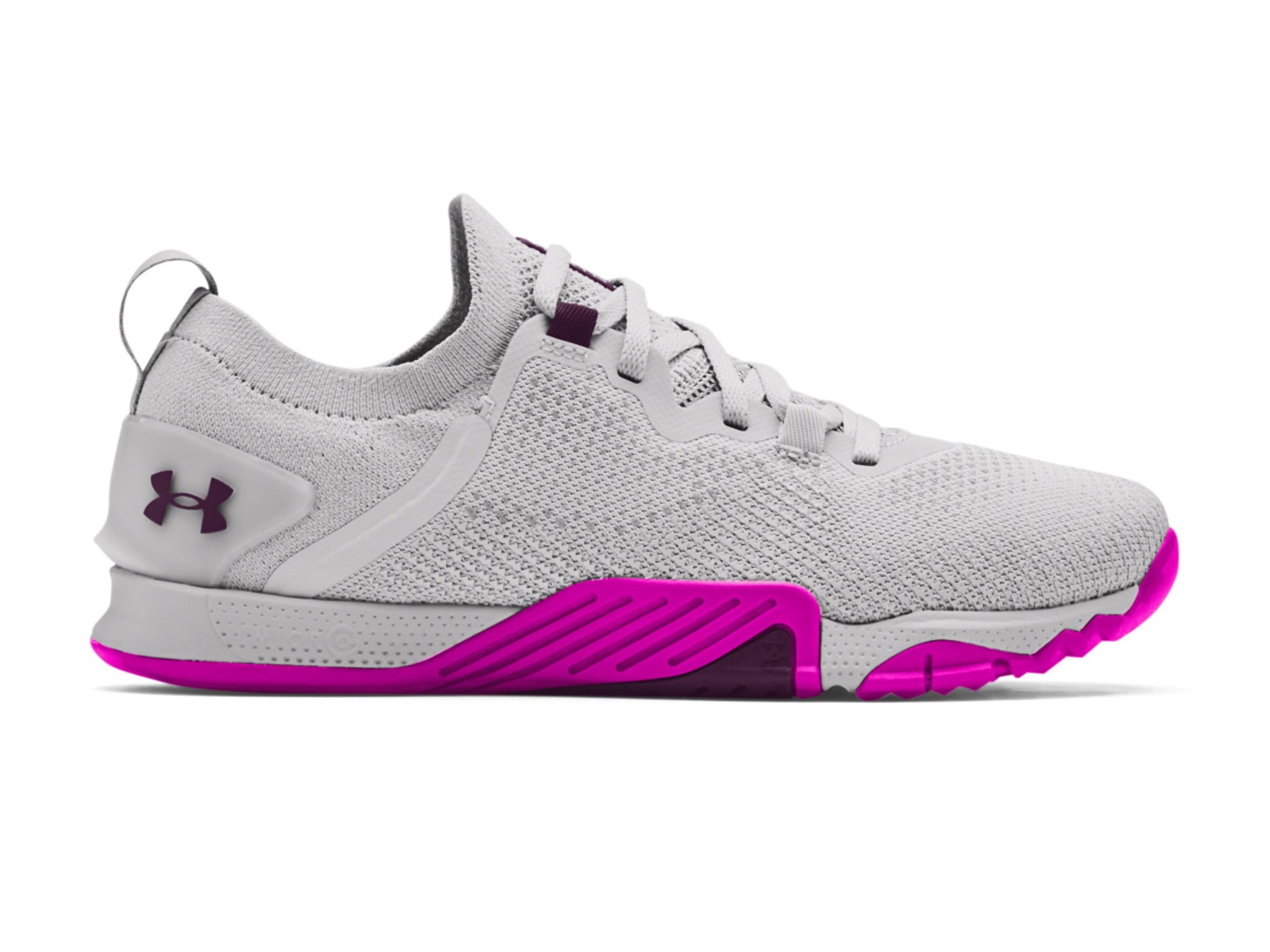
Best: For comfort
This is an extremely comfortable shoe with some thoughtful touches. The ridged outsole rubber under the toe box stops you dead in your tracks for fast changes of direction, and helps with traction when you’re lifting. The upper is reinforced with overlays for stability and durability, and the outsole rubber wraps up the side of the shoe to withstand rope climbing. It also has an external heel counter with a ridge for traction during handstand push-ups (yes, you heard correctly). We’re not sure we felt the benefits of the ridge with our feet up on the wall, however.
The shoe is low to the ground and the firm midsole and well-designed outsole make for a stable base for lifting with notable power transfer. The padded heel collar provides plush comfort and the bootie construction hugs the foot securely. They come up slightly big, so definitely go for your street shoe size, rather than sizing up.
Domyos women's fitness shoes
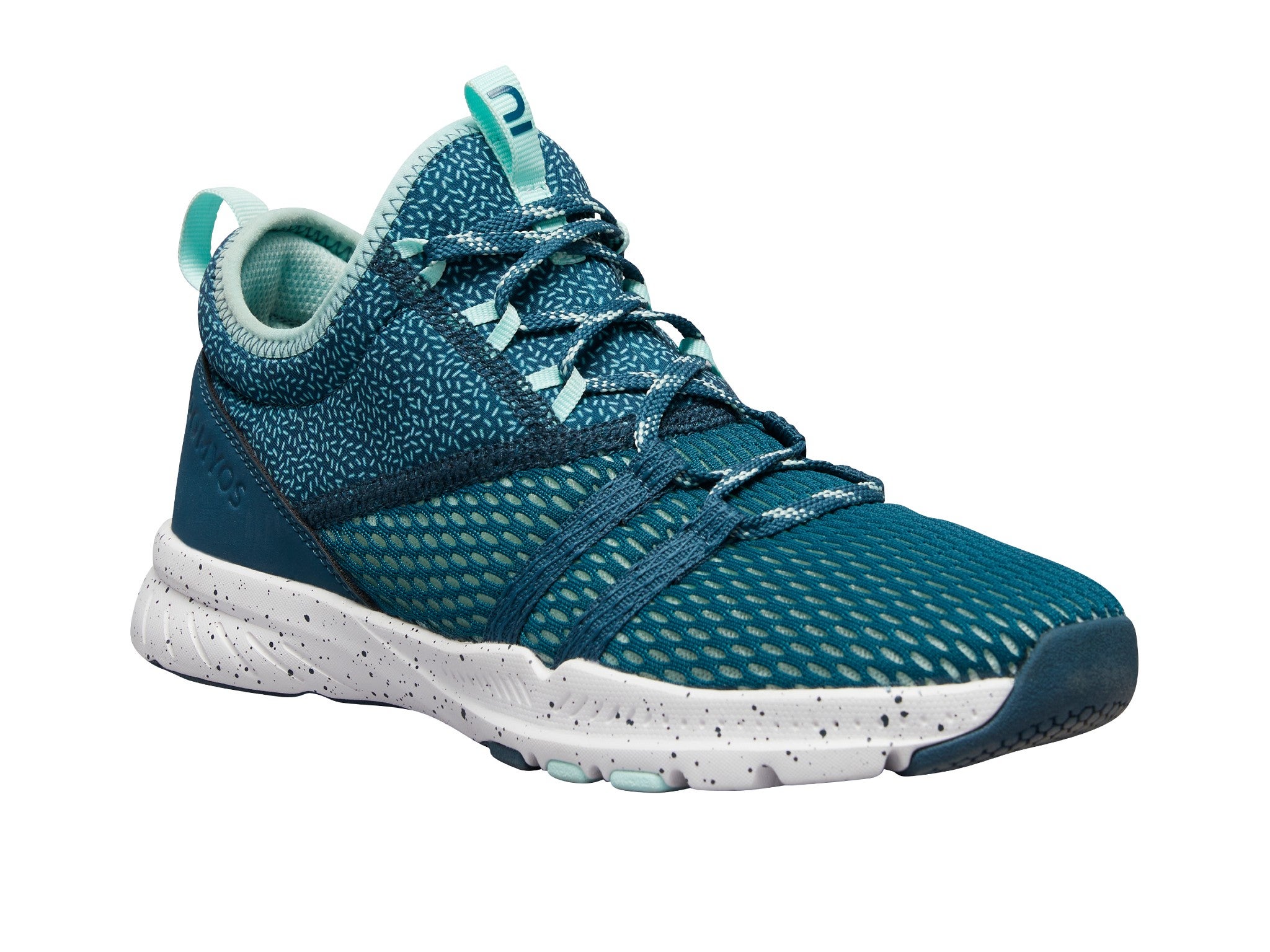
Best: Budget option
This is an affordable option that would be a good choice for HIIT classes that involve multi-directional movement, short bouts of running, plyometrics and light lifting. There is some heel support, reasonable grip on the flat outsole and a little structure in the upper, but not enough of any of these for serious lifting. They’d also suit a dance-based fitness class where you don’t want to wear thick, bouncy running shoes and risk turning your ankle. The bootie construction makes for a close fit and, overall, it’s a nimble, comfortable, lightweight shoe.
Sundried women's barefoot shoes 2.0
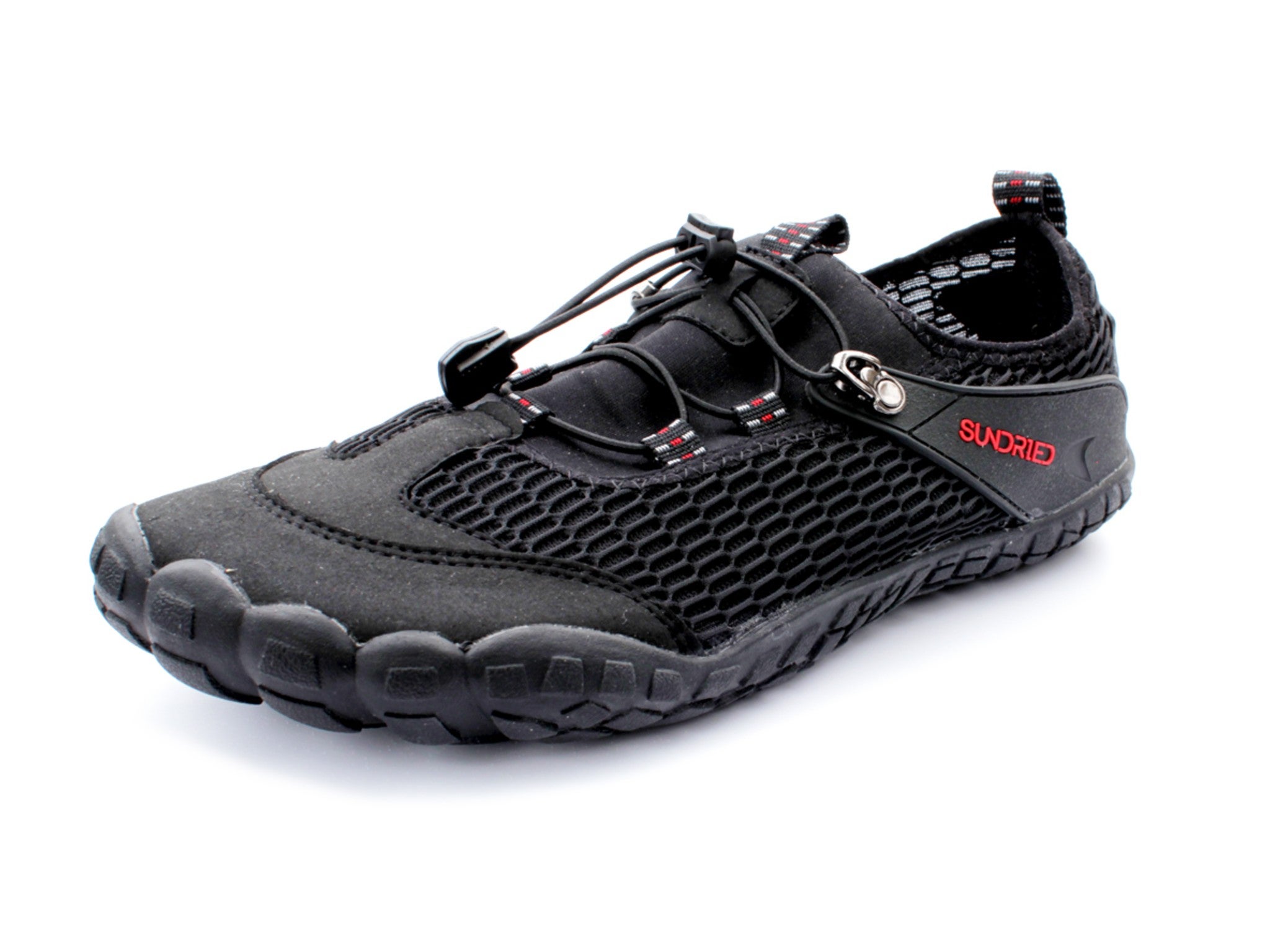
Best: For barefoot fans
If you subscribe to the minimalist, barefoot approach in your shoes, these are a good choice. The rubber outsole provides great grip and you can really feel the ground (it performed well in a dance-based fitness class). The toggle lace closure and bootie construction secures it snugly to the entire foot. There’s subtle arch support and it’s super-wide in the forefoot, which gives a lovely feeling of the toes spreading when you walk or lift. As would be expected in a barefoot shoe, the outsole isn’t flat and the upper doesn’t provide support for lateral movement or heel/ankle support. So, if you’re new to this kind of shoe, you’d need to adapt to them by easing in with short, low-intensity sessions (especially with weights) to build strength and stability in the feet, ankles and lower leg.
New Balance minimus TR
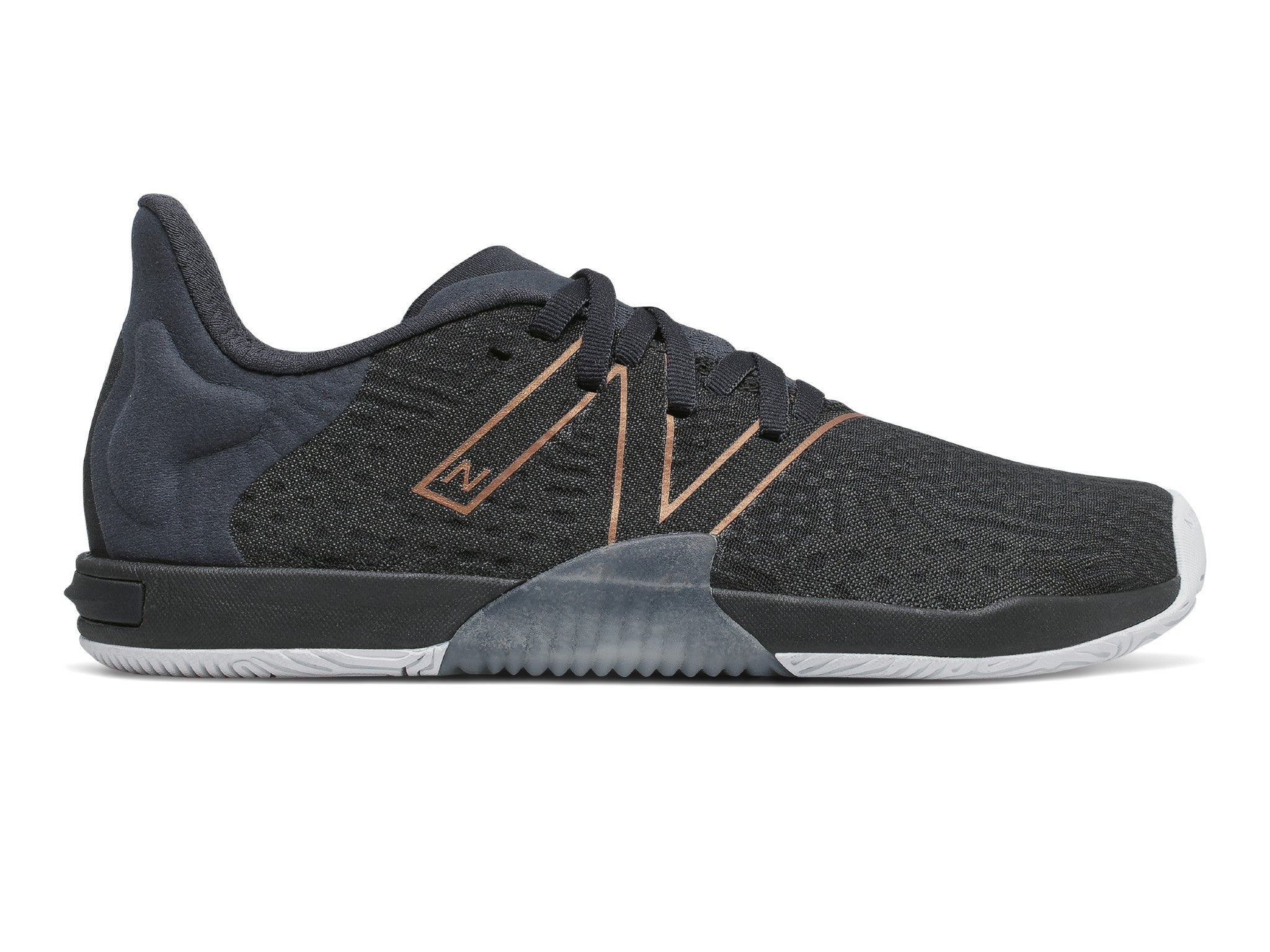
Best: Lightweight shoe
This is a neat, light little package of a minimalist training shoe that’s extremely comfortable. It’s low to the earth with good ground feel, while the midsole is dense enough for decent power transfer and the supportive upper and reasonable heel support means your foot doesn’t tip out of the shoe when doing fast, lateral movements in a HIIT or functional fitness class, or when you’re lifting weights (although it wouldn’t be our first choice for heavy, explosive lifting).
It’s perfect for HIIT fans that don’t want a chunky shoe, but do want grip, for mountain climbers or burpees, and agility, for multi-directional moves. They have enough cushioning to feel good for short bursts of running, and you can wear them without socks, but it’s not the most breathable shoe, so be sure to deodorise afterwards if you do. Adjust to these carefully by building up to longer sessions, unless you’re already used to a minimalist shoe. It fits snugly to the whole foot with a wide toebox, but comes up small, so size up half or even a whole size.
Puma x first mile LVL-UP women’s training shoe
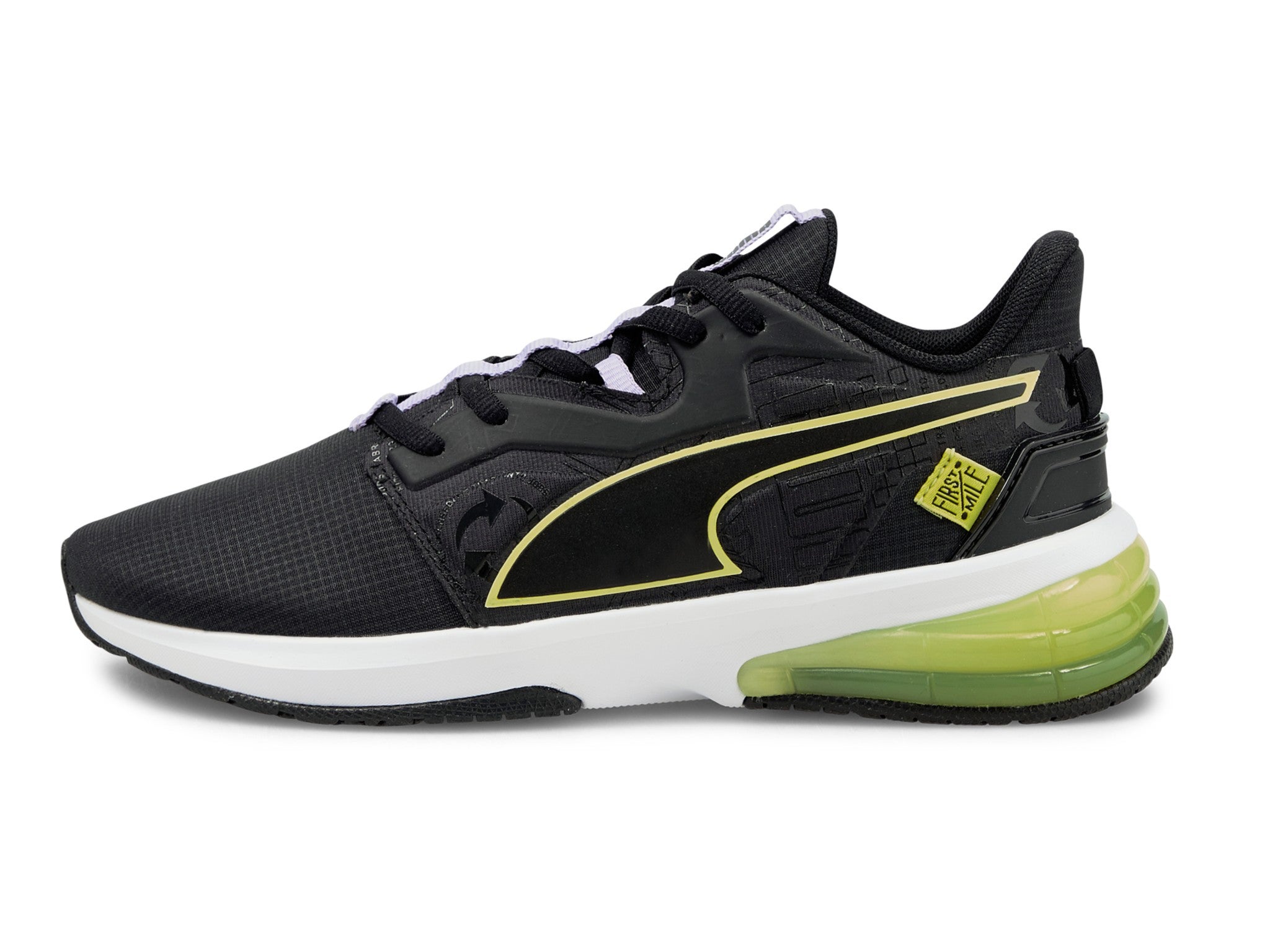
Best: For sustainability
This is part of Puma’s first mile range, which uses yarn made from recycled plastic. The upper is made of 64 per cent recycled polyester, while the laces and embossed detailing are entirely recycled polyester. Billed as a “low boot”, it comes up high around the ankle, which feels good if you lack ankle stability. It’s an agile and responsive shoe – the midsole feels cushioned without being cushy, the upper is firm and supportive (although it could do with being more breathable) with extra reinforcement around the heel, and the outsole provides a stable base for lifting and excellent traction for movement in all directions – even on a smooth floor, your feet stick like Spider-Man. The heel feels a little too hefty for smooth running and it’s at the heavier end of training shoes, but it’s very comfortable and accommodates a wider foot.
The verdict: Gym trainers for women
The Inov-8 F-Lite G 300 performed well across all areas and is a good choice if you’re a functional fitness fan who’s hard on your shoes. It’s the most expensive option, but we’d say this is compensated for in its durability. It was closely followed by the Reebok nano X1s, as a cult shoe that also does a great job across multiple activities. We’d still always opt for a weightlifting-specific shoe, such as the Adidas powerlift 4s, if that’s your sole focus.
Voucher codes
For the latest discounts on trainers and other sports offers, try the links below:
Take a look at our best gym leggings if you’re on the hunt comfortable and stylish workout gear
